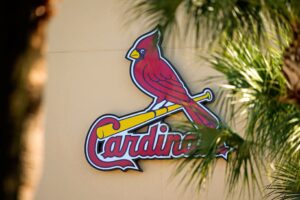Shortening the 2020 MLB Schedule
If the baseball season resumes, it will need a shortened schedule – and that’s the understatement of the month. Obviously, Major League Baseball and all who have a vested interest want to see as many games played as possible. They also want to make sure the public is safe. It’s a tough line to walk.
Many questions exist, including exactly how many games they end up playing. Part of that relies on when the season resumes, but part of it also relies on how they set up the schedule. A lot of fans don’t realize that Major League Baseball has a specific scheduling formula and has for over a century. It has changed based on how many teams are in the league, but it has always existed.
Historical Precedent
With shortened seasons, there is historical precedent. 1994 won’t be discussed here because the season stopped early – it was a completely different situation. 1972 lost about a week of games due to the first-ever players strike. 1980 and 1990 had the opening of the season delayed by about a week due to labor issues. In both cases, the games were all made up.
That leaves 1995 and 1981. 1995 was different than the current season because everything was delayed. 1981, like 2020, had the season start, stop, then start again. The only difference is that in 1981, the stoppage came two months into the season, while the stoppage in 2020 came about a month into spring training. However, in 1981, no games were made up. In 1995, league schedulers made an abbreviated schedule, but it had some strange results. One of the strangest was that the Montreal Expos hosted four one-game series.
Baseball will need to wipe the slate clean when making the 2020 schedule. Numbers have been thrown all over the place – 100 games, 120 games, and so on. But those are pulled out of the sky as brainstorms. None have thought the whole thing through. Here is a proposal that does.
The Current Setup
 In a normal season, the scheduling formula is as shown in the table at left. Each team has three home series and three away series against every other team in their division. With some exceptions made for logistical purposes, one of those six series is a four-gamer; the rest are three-gamers. Against the rest of their league – National or American – they play one series at home and one on the road. With four of the teams, both are three-gamers; against the other six, one is a four-gamer.
In a normal season, the scheduling formula is as shown in the table at left. Each team has three home series and three away series against every other team in their division. With some exceptions made for logistical purposes, one of those six series is a four-gamer; the rest are three-gamers. Against the rest of their league – National or American – they play one series at home and one on the road. With four of the teams, both are three-gamers; against the other six, one is a four-gamer.
Interleague play is a bit different. In years where the East, Central, and West divisions don’t all play each other, each team plays their designated interleague (DIL) rival four times – two games at home, two on the road. That leaves 16 games against five teams. Each team plays a three-game series on the road against two of them, a three-game series at home against two more, and a pair of two-gamers – one at home, one on the road – against the remaining team.
In 2020, the pairings are NL West versus AL Central, NL Central versus AL East, and NL East versus AL West. So, for example, the Arizona Diamondbacks would have had a three-gamer on the road against the Cleveland Indians and another against the Chicago White Sox. They would have hosted three-gamers against the Detroit Tigers and Minnesota Twins. Then they would have had two games at home and two on the road against the Kansas City Royals.
The Modifications to the 2020 MLB Schedule
Three modifications can be made that will reduce the season while maintaining some semblance of balance among teams in the same division.
Reduce Interleague Play
 Interleague play, due to having an odd number of teams in each league, cannot be eliminated. It can, however, be shortened. Instead of playing 20 games, have the teams play six – three at home and three on the road – against their DIL rival. That knocks 14 games off the schedule, making it 148 games. It’s a start, but it’s not enough.
Interleague play, due to having an odd number of teams in each league, cannot be eliminated. It can, however, be shortened. Instead of playing 20 games, have the teams play six – three at home and three on the road – against their DIL rival. That knocks 14 games off the schedule, making it 148 games. It’s a start, but it’s not enough.
No Four-Game Series – Make Them Three
Make every series a three-gamer. That reduces the number of interdivision games from 66 to 60 and intradivision games from 76 to 72. However, that makes 138 games, six less than 1995. Unfortunately, that still won’t be enough, even in the best-case (and most likely, if there’s a season) scenario of starting the season at the beginning of June.
Reduce Intradivision Series
 Instead of playing every divisional opponent for three series at home and three on the road, do two series at each site. That makes 12 games against each divisional opponent for a total of 48 games. It reduces the schedule to 114 games, making a June start date realistic. Plus, it keeps the postseason from dragging into late November or early December, something baseball wants to avoid.
Instead of playing every divisional opponent for three series at home and three on the road, do two series at each site. That makes 12 games against each divisional opponent for a total of 48 games. It reduces the schedule to 114 games, making a June start date realistic. Plus, it keeps the postseason from dragging into late November or early December, something baseball wants to avoid.
Schedule Balance amongst Teams in Interleague Play
 With only one interleague opponent we could use a more creative approach when creating the schedule. If teams face their DIL rival with a shortened schedule where every game matters more than usual, some teams could have an issue with this.
With only one interleague opponent we could use a more creative approach when creating the schedule. If teams face their DIL rival with a shortened schedule where every game matters more than usual, some teams could have an issue with this.
The New York Mets would face the powerful New York Yankees six times, but one of their division rivals – the Washington Nationals – would be facing the Baltimore Orioles. The Orioles look like a team that is set up to tank the season, so the Nationals could get six easy wins. The Yankees could also have the same complaint with the Tampa Bay Rays facing the Miami Marlins six times. Most baseball insiders feel the Marlins will be more competitive than the Orioles, but the Fish are still in rebuild mode.
The Fix
What MLB can do to make this as fair as possible is use the final 2019 records and pair off the AL and NL teams by record. This would create some very interesting matchups. The Los Angeles Dodgers had the best record in the National League. Their opponent would be the Houston Astros. That is a very juicy matchup in the wake of the Astros cheating scandal. The Yankees would face the Atlanta Braves. Yankee fans may say that’s not fair because the Braves are better than the Mets, but the trade-off is the Rays would be facing a much better team in the Milwaukee Brewers than they would have otherwise.
 The Mets would still face a good team in the Indians, but one that is more evenly matched with them, while the Nationals would now be facing the Twins. Other interesting matchups are the Oakland Athletics versus the St. Louis Cardinals. These two teams always manage to have competitive teams every year. The Boston Red Sox – who still have good players, despite losing Mookie Betts – would be facing the up-and-coming Diamondbacks.
The Mets would still face a good team in the Indians, but one that is more evenly matched with them, while the Nationals would now be facing the Twins. Other interesting matchups are the Oakland Athletics versus the St. Louis Cardinals. These two teams always manage to have competitive teams every year. The Boston Red Sox – who still have good players, despite losing Mookie Betts – would be facing the up-and-coming Diamondbacks.
The battle of Chicago would have been nice to see with all the improvements the White Sox made, but six games against the Philadelphia Phillies would be intriguing. As for the Chicago Cubs, they draw the Texas Rangers. Just imagine a World Series in Chicago without any previous games being played between the two teams.
Easier Opponents for Some
In other cases, the DIL rivalry does work between competitive teams, and this is not a perfect system by any stretch. Some teams benefit heavily from this. The Los Angeles Angels would be facing the San Francisco Giants instead of the Dodgers. The Cincinnati Reds would be facing the Seattle Mariners instead of the Indians. The Toronto Blue Jays do not have a natural rivalry for their DIL team, so they alternate yearly between two teams. This year would have been the Phillies, but instead the Jays would get to face the Colorado Rockies.
The San Diego Padres DIL rival is the Mariners. The Padres, who are poised to have a good season, would now be facing the Kansas City Royals. There isn’t much difference between the Royals and the Mariners. Rounding out the matchups are the Marlins facing the Detroit Tigers and the Orioles facing the Pittsburgh Pirates.
It’s not a perfect system, but it is fairly done. The only teams that gain a huge matchup advantage versus what would happen with their DIL rival are the Reds and the Blue Jays.
Outlook
Whether games are played at all is a huge if. However, if they do play games – and we know the league will try like mad to do so – the schedule has to have a formula behind it. To do otherwise would be patently unfair as the teams battle for postseason positioning. With this proposal, the schedule would be as fair as possible while having a logical formula for the games. It would be best for the teams, best for the fans, and – most importantly – best for baseball as a whole.
Jared Cantatore wrote the entire “Schedule Balance among Interleague Play” section.
Main Photo
Embed from Getty Images






